The Heat is On: Protecting Your Pet from Heat Stroke

The approach of summer brings a spike in temperatures, and the warmer weather tempts many pet owners to spend more time outside with their pets. However, taking your four-legged friend for a steamy run outside or a quick car trip to the store can put them at risk of heat stroke. Pets are not able to remove their fur coat and like extreme cold temperatures, hot weather exposure can also be dangerous. Our Animal Emergency Care team wants to ensure your pets stay cool this summer, and we describe heat stroke signs, treatment, and prevention in your pets.
Pet Poison Prevention: Understanding Chocolate Toxicity in Pets
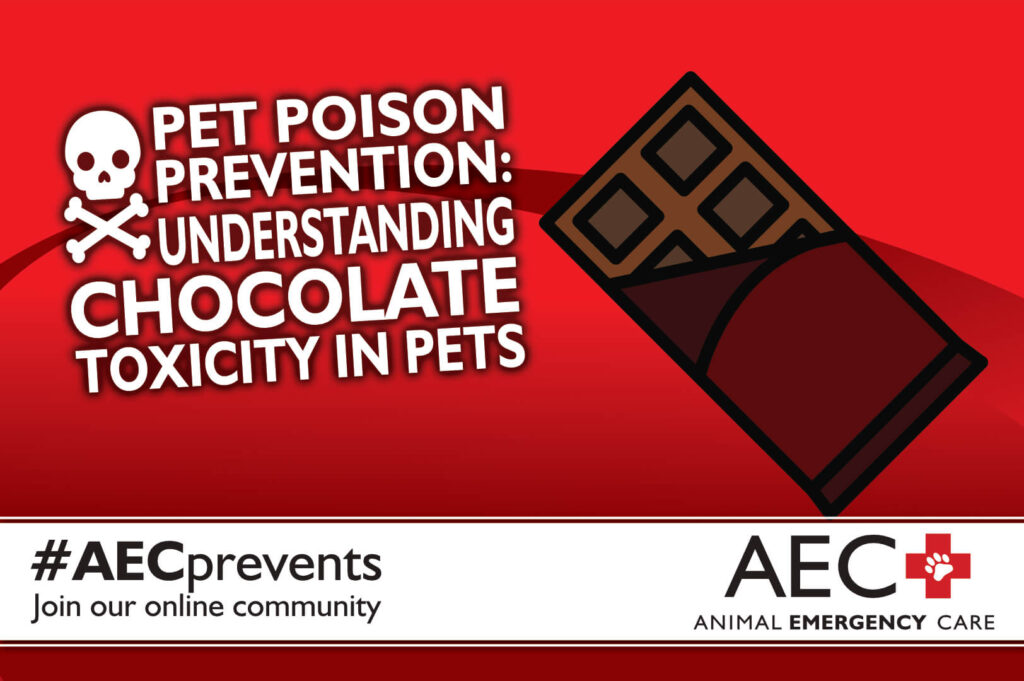
The delicious aroma of chocolate can be difficult for many people to resist and pets are no different. However, chocolate can be toxic to pets and may cause death in some cases. It is not uncommon for pets to sneak some of this sweet treat. In fact, in 2020 chocolate was the fourth most common pet toxin reported by the ASPCA Animal Poison Control Center with approximately 76 cases reported daily. OurAnimal Emergency Care team wants pet owners to understand the dangers of chocolate and what to do if your pet accidentally becomes poisoned.
Too Much of a Good Thing: The Pet Obesity Problem

It can be difficult for pet owners to resist the adoring eyes of their four-legged companions and not shower them with treats. However, offering your pet too many treats or overfilling their food bowl can be dangerous for their overall health and wellness. Pet obesity is an epidemic, with more than 50% percent of dogs and cats in the United States obese or overweight. Pets who are overweight or obese have an increased risk for numerous health problems that may decrease their life expectancy and quality of life. Fortunately, many weight-related health issues in pets can be alleviated with proper weight management. Our Animal Emergency Care team describes obesity signs, associated diseases, and ways to protect your pet from becoming an obesity statistic.
5 Common Painful Conditions in Pets

Like people, pets can experience pain from a variety of medical problems. However, most pets are skilled at masking signs of illness or discomfort, and it can be challenging for pet owners to know when their four-legged companions need help. September is Animal Pain Awareness Month and the perfect time to bring your pet in for a veterinary examination to determine if they are experiencing any pain. Recognizing pain signs in your pet may be easier for obvious injuries such as a broken leg. However, pets can suffer from many painful conditions that may not be immediately apparent. Our Animal Emergency Care team describes five common painful conditions in pets and ways to recognize the signs.
Understanding 4 Types of Pain in Your Pet

Pets, like people, thrive with a consistent daily routine, proper nutrition, regular exercise, and preventive medical care. The human-animal bond is a vital part of caring for a pet, and it can be heartbreaking if you suspect your pet is experiencing pain. Recognizing signs of pain can be challenging because pets are skilled at hiding illness, injury, or other painful problems. Understanding your pet’s type of pain is the first step toward helping alleviate their discomfort. Our Animal Emergency Care team describes the four common pet pain types and how to recognize the signs.
Canine Hepatitis: Infectious Liver Disease in Dogs
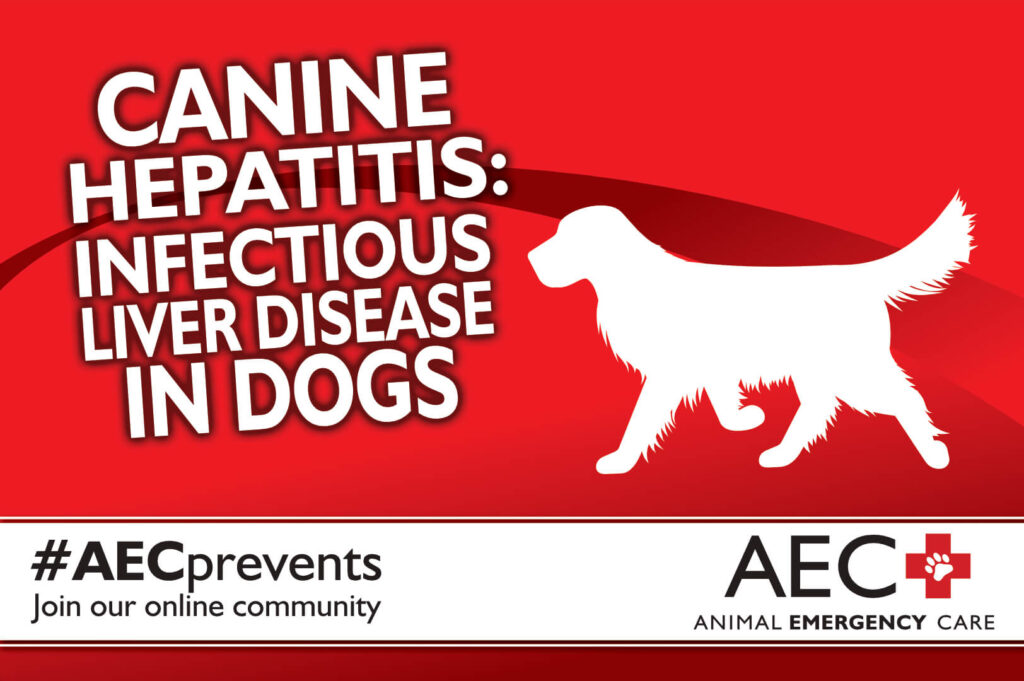
Advances in veterinary medicine have resulted in your pets living longer, healthier lives. Additionally, worldwide pet vaccination programs have vastly decreased your dog’s chances of contracting dangerous infectious diseases, which can be deadly. During your dog’s puppyhood, your veterinarian will recommend a series of core vaccinations, to ensure their immune system can fight common dog diseases. Then, your canine companion must continue to receive booster vaccinations throughout their lifetime to ensure they remain healthy and protected into their grey muzzle years.
Canine Influenza: Nothing to Sneeze At
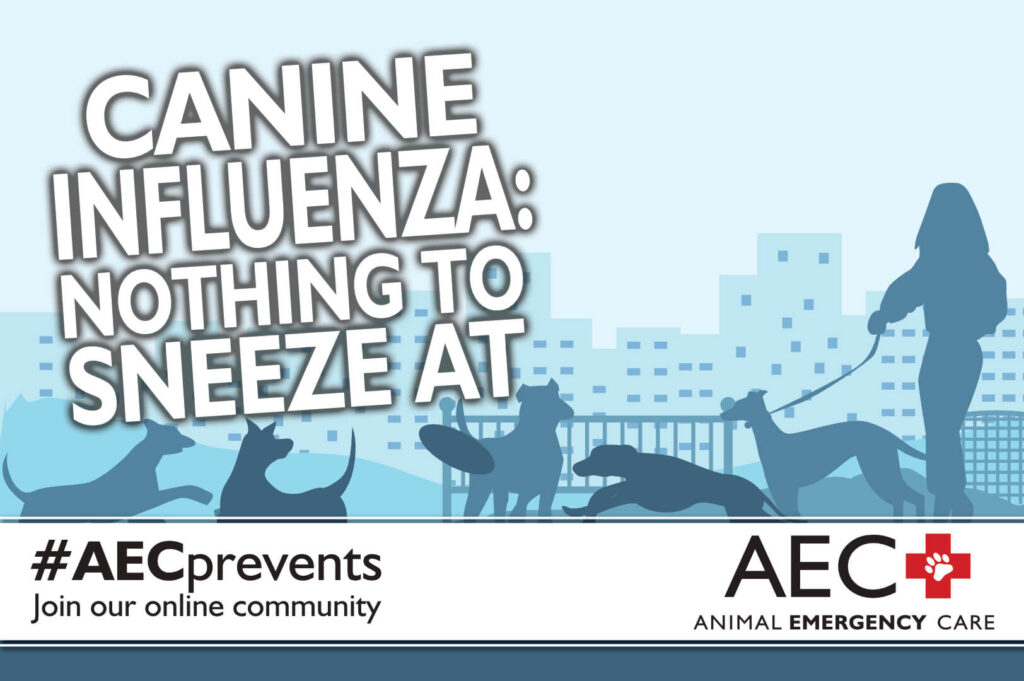
Caring for your canine companion, which includes regular veterinary examinations, parasite control, proper nutrition, and regular exercise, is no light responsibility. Vaccinations are also a critical component of your pet’s overall health and wellness routine, and the safest, most cost effective way to protect your pet from common dog diseases. Your family veterinarian has likely vaccinated your dog with core vaccinations including canine parvovirus and rabies, but non-core or lifestyle vaccinations such as the canine influenza virus (CIV) vaccine may be essential for your pet’s protection. Dogs who frequent boarding facilities or crowded dog parks may have an increased risk for CIV infection. Our Animal Emergency Care team wants to ensure your dog is protected from this dangerously contagious virus. We describe signs, treatment, and prevention.
Canine Distemper: Ensure Your Dog is Protected
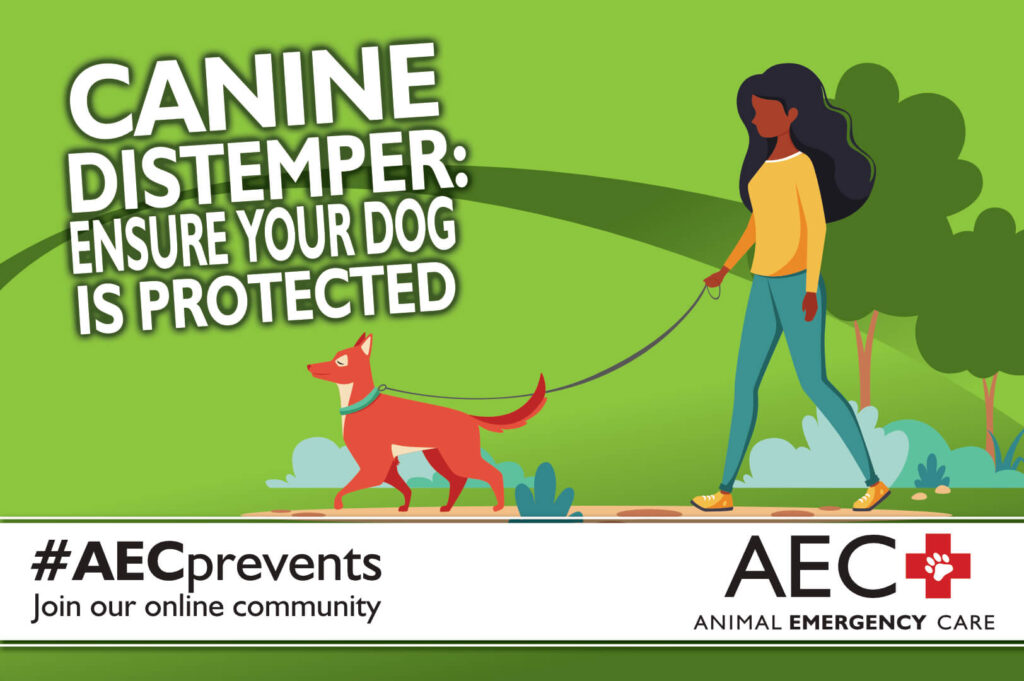
During your yearly or more frequent visits with your family veterinarian, your canine companion likely received their core vaccinations and boosters. Core vaccines are defined by the AVMA as those that “protect from diseases endemic to a region, have potential public health significance, are required by law, are virulent/highly infectious, and/or pose a risk of severe disease.” The few first months of your dog’s life are especially critical to ensure their immune system is strong so that common infectious diseases can be prevented. Continuing to vaccinate your pet throughout their life to ensure they are protected from potentially deadly infections and viruses is also critical.
Feline Calicivirus: More Than a Cold
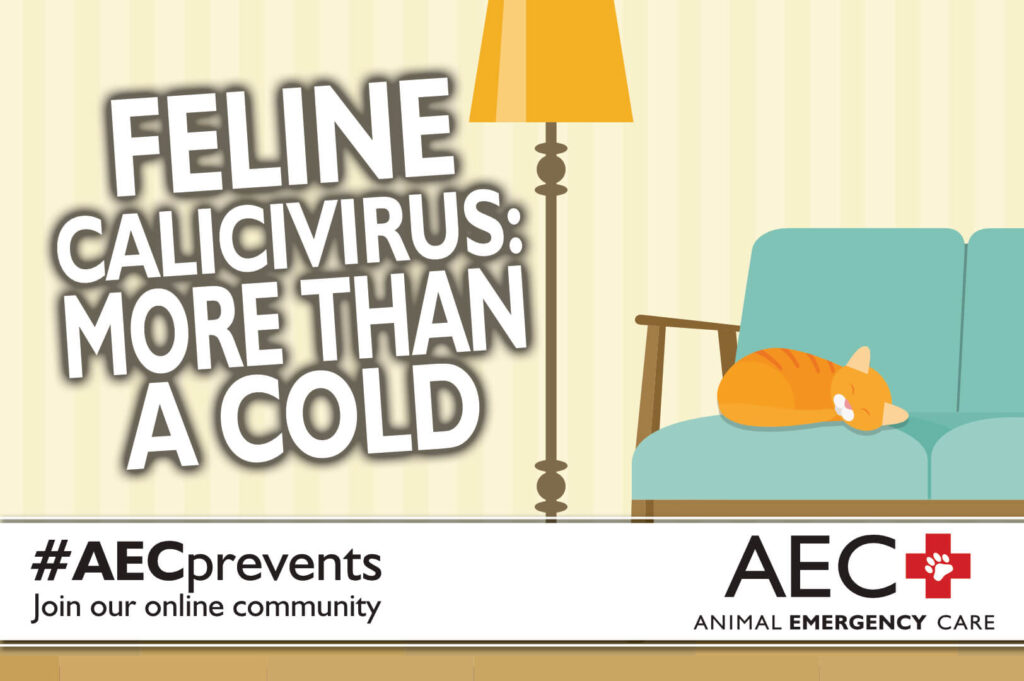
A new feline companion in your family is an exciting time, but pet owners must remember a lot about their care. Cats’ independent nature can make them seem as though they do not require a lot of time and energy. However, cats require regular veterinary care, in addition to good nutrition, and proper mental and physical exercise. The first few months are critical to ensure that your new cat is properly protected from common infectious diseases and viruses. Young cats and cats with chronic diseases are at increased risk for respiratory problems because their immune systems are not fully developed or are weakened from disease. Feline calicivirus (FCV) is a common virus affecting cats and our Animal Emergency Care team describes FCV signs, treatment, and prevention.
Feline Viral Rhinotracheitis: A Potential Lifelong Infection
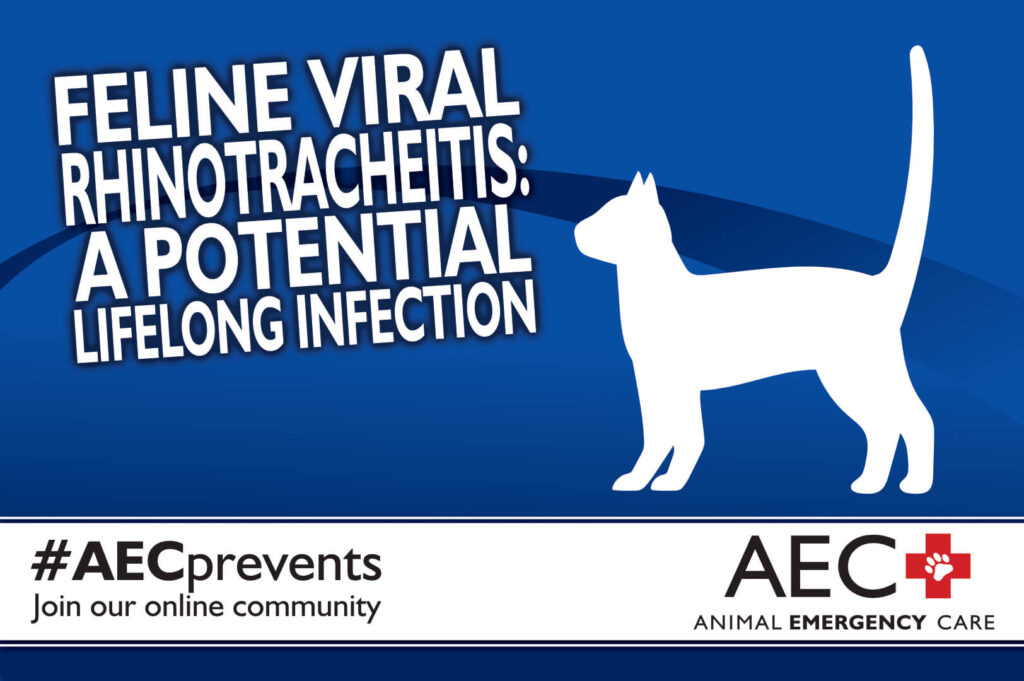
Caring for a feline companion is special, filled with furry cuddles, purrs, and afternoon naps in the sun. Cats are independent with unique personalities, and pet owners know that their feline friend will not hesitate to let them know when they want treats or an extra cuddle. Owners can easily become distracted with cuteness overload when they bring home a new kitten or adult cat. However, ensuring your cat receives regular veterinary examinations and vaccinations, especially during the first few months after joining your family, is critical. Kittens are particularly at risk for respiratory infections, including feline viral rhinotracheitis (FVR), because their immune system is still developing. Our Animal Emergency Care team wants to ensure your cat remains healthy through all their life stages, and we describe FVR signs, treatment, and prevention.
